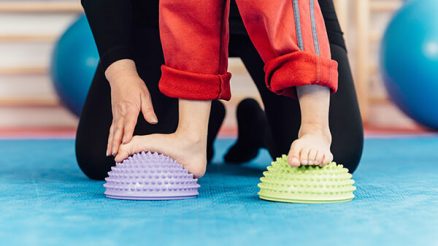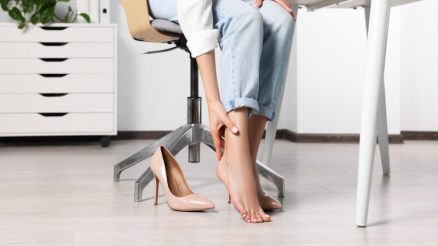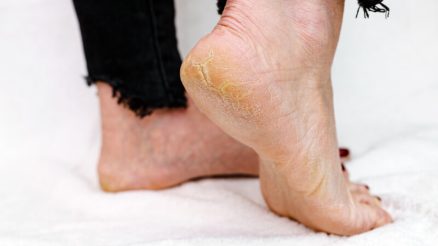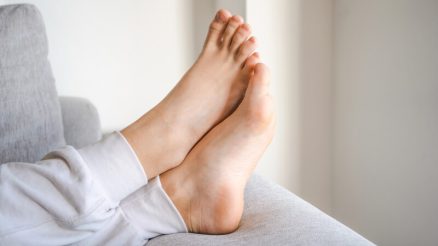For nurses, retail associates, and anyone whose job demands long hours on their feet, foot fatigue isn’t just an occasional ache—it’s a constant companion that can impact overall well-being and job performance. The relentless standing, walking, and often heavy lifting can take a significant toll on your feet, leading to discomfort, pain, and even long-term issues.
But it doesn’t have to be this way! By understanding the causes of foot fatigue and implementing proactive strategies, you can significantly reduce discomfort and keep your feet happy and healthy.
Understanding Foot Fatigue: More Than Just Tired Feet
Foot fatigue is the general term for the discomfort, soreness, and aching sensation that arises from prolonged standing or walking. It’s often accompanied by:
- Muscle soreness: Especially in the arches, heels, and calves.
- Stiffness: After periods of rest.
- Swelling: In the feet and ankles.
- Burning sensation: Particularly in the balls of the feet.
- General tiredness: That can spread throughout the body.
The primary culprits are gravity, repetitive impact, and inadequate support. Over time, the muscles, ligaments, and tendons in your feet become strained, leading to inflammation and pain.
Proactive Strategies to Combat Foot Fatigue
Here’s a detailed guide on how nurses and retail workers can prevent and alleviate foot fatigue:
1. The Right Footwear: Your First Line of Defense
This is arguably the most crucial step. Your shoes are your foundation for the entire workday.
- Invest in Quality: Don’t skimp on your work shoes. Look for brands known for comfort, support, and durability.
- Proper Fit is Paramount:
- Get your feet measured regularly, as size can change over time.
- Shop for shoes at the end of the day when your feet are slightly swollen.
- Ensure there’s about a thumb’s width between your longest toe and the end of the shoe.
- The ball of your foot should fit comfortably at the widest part of the shoe.
- Avoid shoes that require a “break-in” period; they should feel comfortable immediately.
- Excellent Arch Support: This is vital for distributing pressure evenly and preventing strain on the plantar fascia.
- Ample Cushioning: Look for shock-absorbing soles that reduce impact on your joints.
- Non-Slip Soles: For safety, especially in healthcare or retail environments where spills can occur.
- Breathable Materials: To prevent moisture buildup and reduce the risk of fungal infections.
- Rotate Your Shoes: Have at least two pairs of good work shoes and alternate them daily. This allows each pair to fully dry out and regain its cushioning, extending their lifespan and providing varied support for your feet.
- Consider Orthotic Inserts: Even good shoes can benefit from custom or over-the-counter orthotics if you have specific arch issues, flat feet, or high arches. They provide personalized support and cushioning.
2. Movement and Stretching: Keep Things Flowing
Static standing or repetitive walking can stiffen muscles. Incorporate movement and stretching throughout your day.
- Regular Micro-Breaks: Even a minute or two of sitting, stretching, or walking to a different area can make a difference.
- Foot and Ankle Stretches:
- Ankle Circles: Rotate your ankles clockwise and counter-clockwise.
- Toe Curls: Curl your toes tightly, then spread them wide.
- Calf Stretches: Lean against a wall with one leg back, heel on the floor, feeling the stretch in your calf.
- Plantar Fascia Stretch: Sit down, cross one leg over the other, grab your toes, and pull them back towards your shin.
- Walk Around: If your job allows, take short walks during breaks instead of just sitting. This helps circulation.
- Elevate Your Feet: When on a break or after your shift, elevate your feet above your heart for 15-20 minutes to reduce swelling.
3. Dedicated Foot Care: Pamper Your Peds
Your feet work hard; they deserve some TLC.
- Soak Your Feet: A warm foot bath with Epsom salts can soothe tired muscles and reduce swelling.
- Massage: Use your hands, a tennis ball, or a specialized foot roller to massage the soles of your feet. Focus on tender spots. This improves circulation and releases tension.
- Moisturize: Keep your skin hydrated to prevent dryness and cracking, especially on the heels.
- Trim Nails Properly: Cut toenails straight across to prevent ingrown nails.
4. Lifestyle Factors: Support from Within
What you do outside of work also impacts your foot health.
- Stay Hydrated: Drinking enough water helps prevent muscle cramps and keeps your body functioning optimally.
- Maintain a Healthy Weight: Excess weight puts additional strain on your feet and joints.
- Balanced Diet: Ensure you’re getting enough vitamins and minerals, particularly those that support bone and muscle health.
- Quit Smoking: Smoking can impair circulation, which is vital for foot health.
5. Workplace Ergonomics: Optimize Your Environment
If possible, advocate for or utilize ergonomic solutions in your workplace.
- Anti-Fatigue Mats: These cushioned mats can significantly reduce the impact on your feet and legs, especially if you stand in one spot for long periods (e.g., at a cashier station or nursing station).
- Vary Your Stance: Shift your weight from one foot to the other, or from heels to toes, to avoid putting constant pressure on the same areas.
- Use a Footrest: If you have a workstation where you can sit occasionally, a footrest can help maintain proper posture and reduce strain.
When to Seek Professional Help
While these strategies can significantly alleviate foot fatigue, don’t hesitate to consult a healthcare professional if:
- Your foot pain is persistent and doesn’t improve with rest or self-care.
- You experience sharp, localized pain.
- There’s numbness, tingling, or weakness in your feet.
- You notice significant swelling or discoloration.
A podiatrist or physical therapist can diagnose underlying issues and recommend personalized treatments, including custom orthotics, physical therapy, or other interventions.
Step Towards a Pain-Free Day
Foot fatigue is a common occupational hazard for nurses and retail workers, but it’s not an inevitable part of the job. By prioritizing proper footwear, incorporating regular movement and stretching, practicing good foot care, and adopting healthy lifestyle habits, you can significantly improve your comfort and quality of life, both on and off the clock. Your feet carry you through your day—give them the care they deserve!








